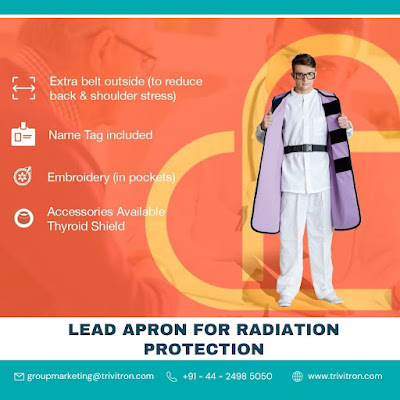Trivitron Healthcare's Cutting-Edge Lead Aprons: A Revolution in Radiation Protection
In the dynamic realm of medical radiation protection, the pivotal decision between lead aprons and alternative radiation protection gear confronts healthcare professionals amidst technological advancements. Trivitron Healthcare takes the forefront, offering a diverse array of radiation protection products, including coat aprons, double-sided aprons, and skirt and vest aprons, meticulously designed for maximum protection during diagnostic and interventional procedures.
Lead aprons, renowned for their efficacy in absorbing and shielding against ionizing radiation, are elevated by Trivitron Healthcare's commitment to customization. The Lead Apron for Radiation Protection provides a personalized solution, with options ranging from coat to double-sided and skirt and vest aprons. The emphasis on customization extends to name tags, embroidery, size variations, and a vibrant palette of color combinations, ensuring tailored protection that caters to the diverse needs of patients.
As the article delves into the comparison between lead aprons and other radiation protection gear, the spotlight is on material distinctions and the resulting variations in protection levels. Trivitron Healthcare's lead aprons stand out not only for their composition but also for the emphasis on personalized options, underscoring the impact on the patient experience.
Addressing future trends and innovations in radiation protection, the article highlights the dynamic nature of the field. Trivitron Healthcare's dedication to innovation and customization emerges as a differentiator, positioning its products as a testament to excellence in medical radiation protection.
In conclusion, the choice between lead aprons and alternative gear is not merely a matter of safety but a commitment to excellence. Trivitron Healthcare's range of radiation protection apparel stands out for ensuring maximum safety while prioritizing the unique preferences and needs of both healthcare practitioners and patients.



Comments
Post a Comment